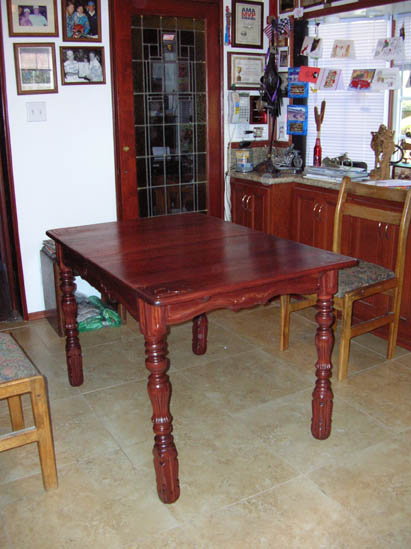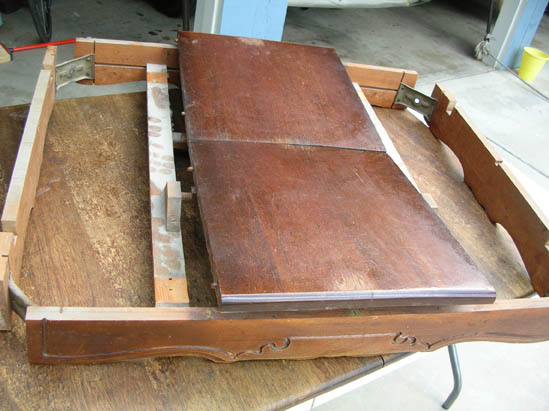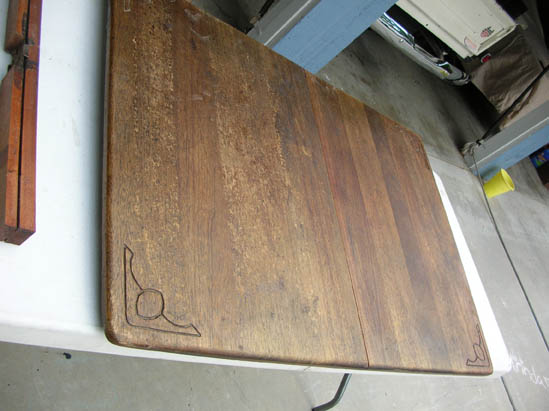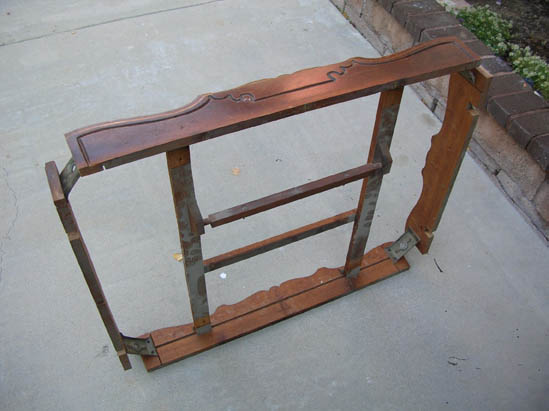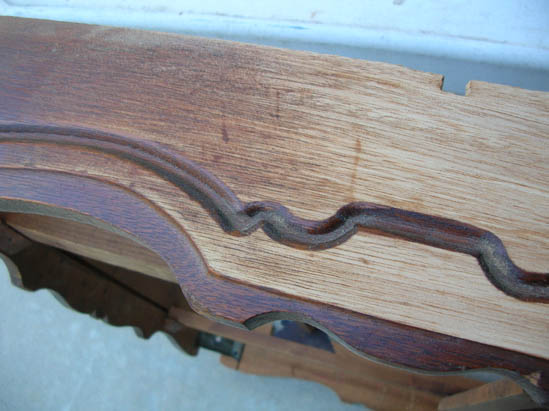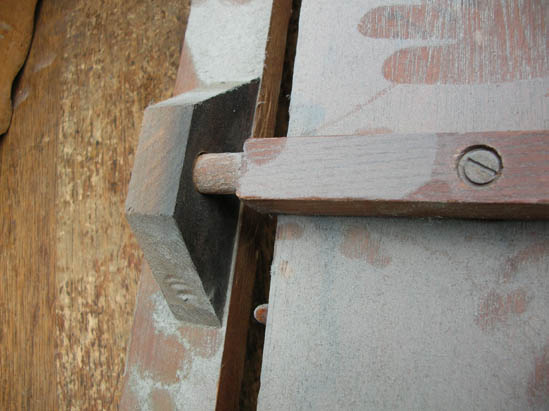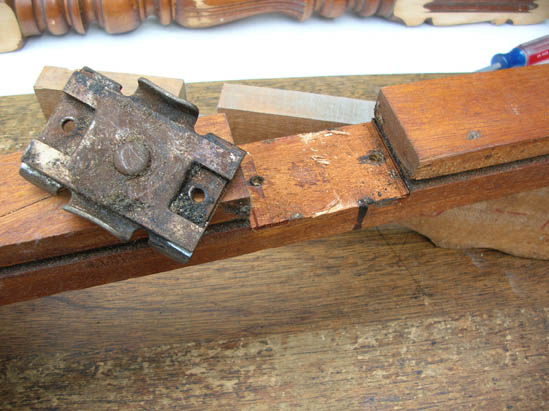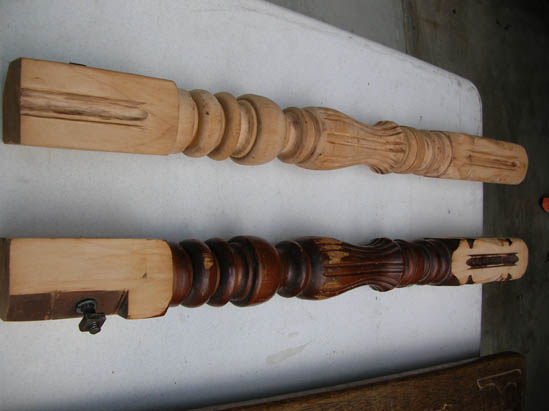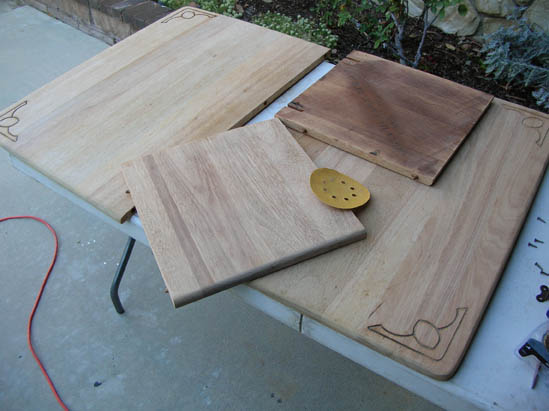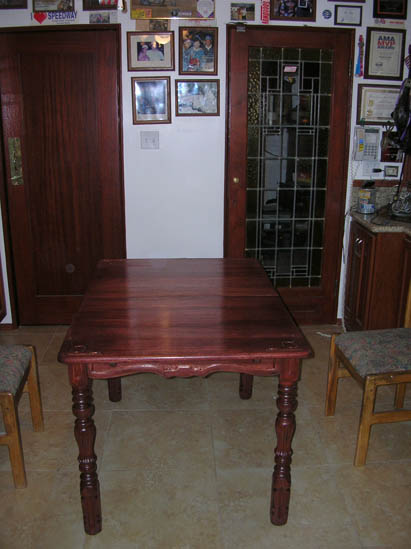|
Table Restoration
My neighbor asked me to help with a table restoration project for this table he used in his kitchen/breakfast area for many years. Not being smart enough to decline the offer, it wound up in my shop for a few days worth of disassembly, crud scraping, heavy sanding, and refinishing. Howie was thrilled with the results. Let me say up front that restoration projects are messy and there are ample opportunities for breaking parts, losing bits, and less-than-optimal results. Also, before the Antiques Roadshow weenies attack, keep in mind that anything finding my shop for restoration is probably old, interesting, has family history, and is not worth enough money for someone outside the family to want, let alone fork over thousands of dollars for.
This table has a folding leaf that hides under the top. Howie never used this much, so it still had a nice finish on it. It also showed how far gone the rest of the finish was. Taking a factory table apart is simple enough, just keep track of the hardware.
Decades of use combined with spills, grease from the kitchen, and who-knows-what-all made this table a real chore to clean. Decorative carvings on the corners are about an eight of an inch deep and were predictably loaded with stuff you don't want to study. A careful scrape, scratch, and sand procedure was called for.
This was afar as we needed to take the table restoration disassembly process. Once the legs and top are removed, we could reach all of the visible surfaces. Besides, some parts are glued together and that's territory that should not be explored.
Side details are carved all around. These require folded sandpaper and some patience working around the entire groove. If you leave a spot unsanded, it will come out darker than rest of the table and may show. That's no good, so take your time. And wear a dust mask.
There was a lot of dust on the under side of the table even before we started with the sanding. The image above shows the wood pivot mechanism that allows the folding top to function.
Metal clasps and the top roll out mechanism were goo-ied up accordingly. They all worked well after some WD40, a short soak, and some wire brushing. No need to get crazy here.
No table restoration is complete without the legwork. These are standard size and turned from oak blanks. They were also fairly well beat up and used. Flat surfaces were easy to reach while the details were finger killers. If my lathe was large enough, I could have mounted and sanded them as they turned. There would have been some details remaining, but it would have saved a lot of time. As it was, I did one and watched the clock. Then I knew how much time it would take for the other three. I made sure I would not be interrupted, got plenty of paper within reach, a fresh dust mask, and went to town. Sometimes you just have to suck it up and get in the game.
We had to pay special attention to the top pieces on this table. Not only will they be the most visible, but they have to fit together and have the same finish consistency. We cleaned the bottom side as well, but left all manufacturers marks. The folding leaf was slightly thicker than the table top due to wear (we guess). We made them all match. This table is solid oak and the owner wanted it stained to match his newly remodeled kitchen. That's why we took so much care to fully strip/sand the old finish and grime. You can cheat a little when painting, but stain will always show. Give yourself plenty of room if you want to take on a restoration. An exploded table restoration project eats up more space than a completed table.
Howie and I were happy with the stain match and the table restoration came out great. This table was only out of service for a week or so and it coincided with the kitchen remodel, so all went well on the timing front. We learned a bit about keeping track of parts and the time it can take to fully sand a table. If this were a grand antique as opposed to a useful family friend, we wouldn't have done a complete stripping. But that wasn't patina we removed, it was more like footprints on the carpet. We cleaned them out, and the results are terrific. |
